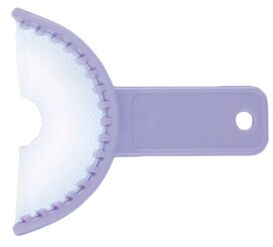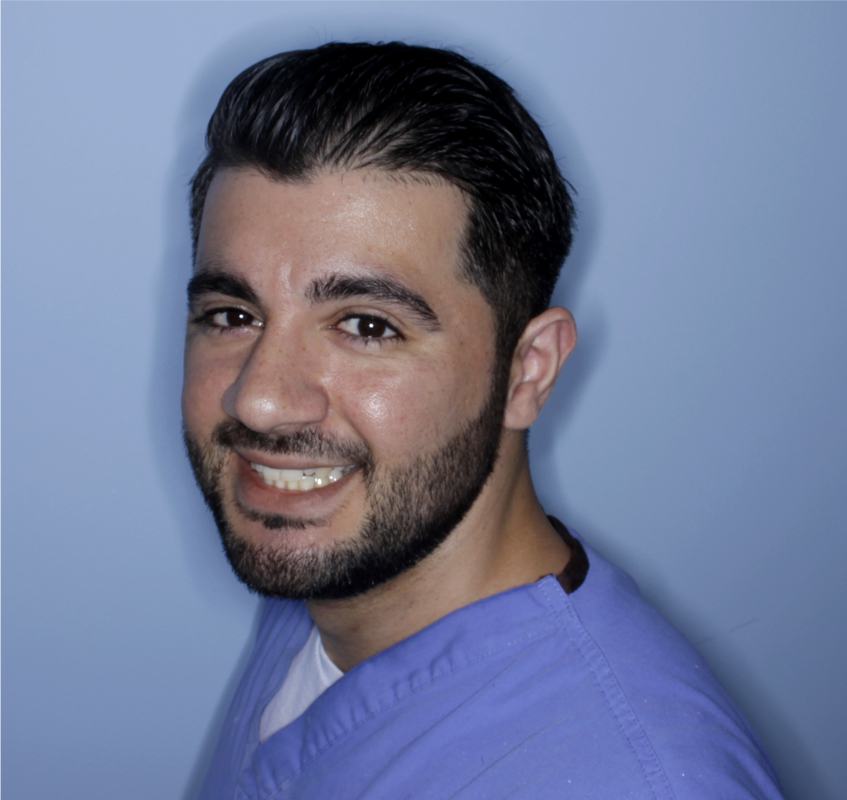 Triple trays was invented and patented by Dr. S Werrin in the 1980’s with the mantra of “Do it better, easier and faster!” Triple trays are referred to as ‘Dual Arch Trays’ and enables the dentist to capture the prepared restorative areas, the opposing arch and occlusal registration in one procedure. This saves chair time and impression material. In theory this works, but why is it over 70% remakes in crown & bridge occur from the use of triple trays? Here is some research into this. Plastic of the triple tray:
Although they are cost and time effective, not all triples trays are designed equally for accuracy. Triple trays flex in nature due to having thin walls of plastic which are flexible, the nature of impression material pushes against the walls of the plastic triple tray and creates an outwards motion which makes the impression tray wall flex as plastic has a reflex memory. The reflex memory of the plastic tray rim can override the resistance of most impression materials and create distortions within the physical factors of the impression. “Impressions are cast from dental die stone type 3 / 4 in a water to powder ratio form and require a chemical reaction to initiate setting from liquid to solid. The chemical reaction is called an exothermic setting reaction and can reach temperatures of 30 – 45°C within the exothermic reaction, the die stone creates a setting expansion rate (between 0-0.015 to 0.30%) due to outward growth of crystals. Due to nature of die stones reaching temperatures of 30 – 45°C and an expansion rate of 0.15 – 0.30% this will create a flex against the plastic of the impression if the restorative area is too close to the plastic. Plastic can be moulded into any shape at 80°C.” “Many dual-arch trays currently being used for dual-arch impressions are plastic. Accuracy of our impressions is compromised when these plastic dual-arch trays flex as the impression is taken, which results in consistent discrepancies of 180 to 210 microns. This flex can be caused by the high side walls of the plastic trays hitting the palatal tissues, maxillary tuberosities or tori present in the patient’s oral cavity. Flex can also occur due to outward pressure on the plastic tray when there is interference in the retro-molar pad area. The very act of swallowing during the impression procedure can cause the tongue to repeatedly displace the lingual wall of the tray during polymerization, creating distortion. As well, the thicker rheology of high viscosity impression materials can cause the plastic tray to flex away from the tooth preparation. Therefore, when the tray is removed, the plastic memory of the tray will create an inward pressure, and depending on the stiffness of the heavy body used, the dies can be distorted mesio-distally, creating marginal fit problems as well as interproximal contact issues. Reference: Glidewell Dental, Clinical Predictability with Dual-Arch Impressions: Plastic Trays Are Not the Answer, “Len” Boksman, DDS, B.S., FADI, FICD, Accessed 1st January 2021 (https://glidewelldental.com/education/chairside-dental-magazine/volume-5-issue-1/clinical-predictability-with-dual-arch-impressions-plastic-trays-are-not-the-answer/) In a study published in the Journal of Prosthodontics various impression trays were measured without impression material, on seating and polymerisation of the material and after removing the impression. All tested plastic trays exhibited distortion in cross section and across the arch. Metal trays displayed no distortion. The authors concluded that high viscosity impression materials should not be used with plastic stock trays. (Cho & Chee, 2004) Patient co-operation: With full arch impressions, the impression is loaded, inserted and controlled by the dentist who controls and dictates the impression in all aspects which is visually seen by the Dentist. Triple trays are loaded, inserted into the patients mouth and the patient is asked to bite together, which is controlled by the patient, not the Dentist as the dentist cannot visually see intra orally and cannot control or dictate the impression. This results in various uncontrolled variables:
It is important that the same impression not be used to re-impress, because distortion will invariably result. Instead go through all of the above procedures again.
0 Comments
Your comment will be posted after it is approved.
Leave a Reply. |
Private Dental Laboratory in London
 Kash Qureshi - Managing Director, Clinical Dental Technician Kash Qureshi - Managing Director, Clinical Dental Technician
About the author:
Kash Qureshi is a Clinical Dental Technician (Denturist) in the U.K who oversees and quality controls over 3000+ fixed and removable prosthesis including implant cases from a clinical and technical aspect monthly at Bremadent Dental Laboratory & Swissedent Denture Clinic in London. www.swissedent.co.uk www.bremadent.co.uk [email protected] Categories
All
Archives
May 2024
|


 RSS Feed
RSS Feed